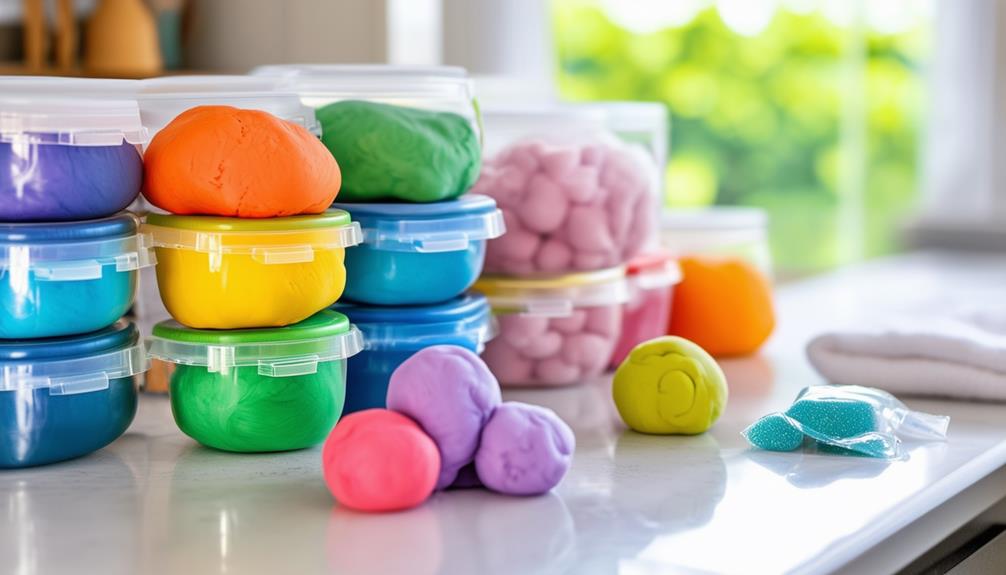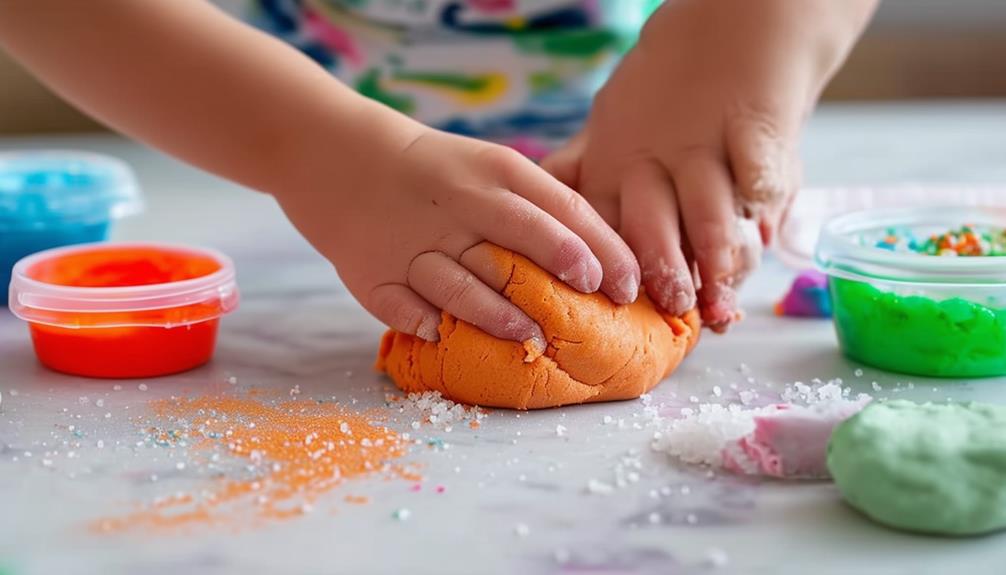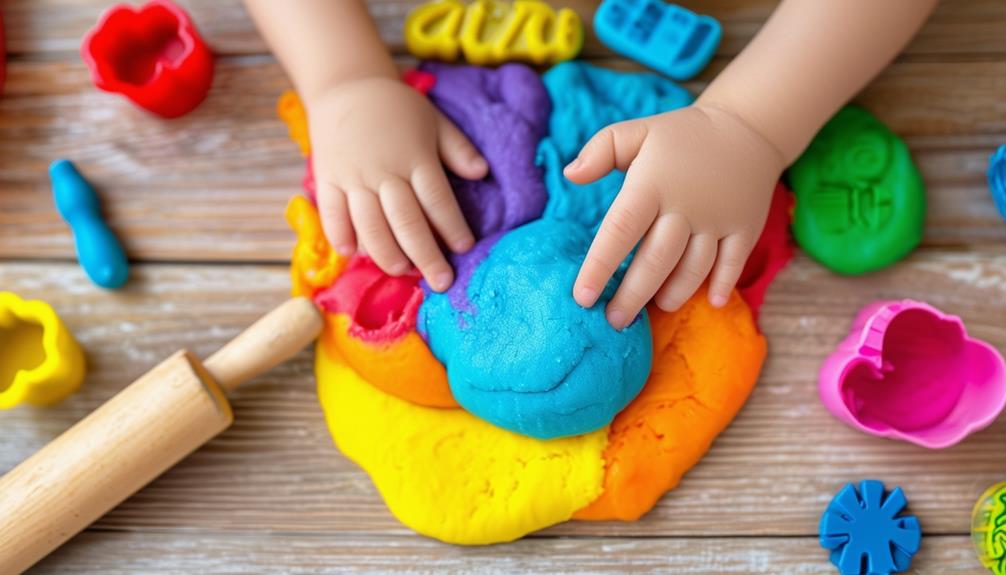How to Make Playdough Last Longer: Storage and Maintenance Tips

If you've ever been frustrated with dried-out Playdough, you know the importance of proper storage and maintenance. Using ziplock bags or airtight containers can greatly extend its life, but that's just the beginning. Keeping it away from direct sunlight and heat sources is essential, and sometimes refrigeration can even help. But what do you do if your Playdough starts to dry out or, worse, shows signs of mold? There's a simple method to revive it and prevent such issues. Want to make sure your Playdough stays fresh for as long as possible?
Proper Storage Techniques
To keep your Play-Doh fresh and pliable, store it in ziplock bags or airtight containers. Proper storage is crucial to prevent drying, which is the primary reason Play-Doh loses its flexibility. By using sealed containers, you create a barrier against air exposure, maintaining the dough's moisture and extending its lifespan.
After each use, immediately place the Play-Doh in a resealable bag or an airtight container. This step locks in the dough's natural moisture, helping to maintain its freshness. Ensure that the containers are properly sealed, as even a small gap can lead to drying over time.
Additionally, always store your Play-Doh away from direct sunlight and heat sources. High temperatures can cause the dough to harden and lose its malleability. Regularly check your Play-Doh for signs of drying, such as cracks or stiffness, to address early stages of drying before it becomes unmanageable.
Reviving Dry Playdough
Reviving dry Play-Doh is straightforward, requiring just water and patient kneading. Start by running the dry Play-Doh under a gentle stream of water or wrapping it in a damp paper towel overnight. This step reintroduces moisture, making the dough easier to work with.
Once the Play-Doh has absorbed some water, knead it thoroughly with your hands to restore its original consistency. If it's still too dry, add a few drops of water at a time. Avoid over-wetting, as this can make the Play-Doh too sticky and difficult to handle.
To prevent your revived Play-Doh from drying out again, store it in airtight containers. This simple maintenance tip ensures that your Play-Doh remains fresh and pliable for extended periods.
Preventing Mold and Mustiness

To prevent mold and mustiness in playdough, proper storage is essential. Here are some tips to keep your playdough fresh and safe for playtime:
- Cool Completely: Allow playdough to cool entirely before storing. Warm playdough can cause condensation, which promotes mold growth.
- Refrigerate in Humid Climates: In humid areas, store playdough in the refrigerator to prevent mold and extend its freshness.
- Use Quality Containers: Choose high-quality, airtight containers or sealable ziplock bags to block out moisture and air that can lead to mustiness.
- Revive Dry Playdough: If playdough dries out, knead in a small amount of vegetable or canola oil to restore its texture and prevent mustiness.
Common Storage Mistakes
Leaving Play-Doh uncovered will dry it out quickly, making it unusable. Always store it in airtight containers to avoid this issue. If you're following a homemade playdough recipe, ensure each batch is sealed properly. Using gel food coloring can also help keep your dough moist longer, but only if stored correctly.
Another common mistake is storing Play-Doh in humid environments, which can make it sticky and even lead to mold. Always store your Play-Doh in a cool, dry place. For the best homemade playdough, avoid fluctuating temperatures and direct sunlight.
Mixing different colors together during storage is also problematic. It can alter their textures and colors, making them less appealing for future use. Keep each color separate to maintain their original quality.
Additional Maintenance Tips

To keep your Play-Doh in excellent condition, consider these additional maintenance tips to ensure its freshness, softness, and pliability for extended periods. First, always seal the containers tightly after each use. This simple yet crucial step helps preserve the Play-Doh's texture and prevents it from drying out. For added protection, consider using resealable pouches. These pouches provide an extra barrier against air exposure, helping to maintain the Play-Doh's softness. Next, store your Play-Doh in airtight containers. These containers create a sealed environment that significantly limits air exposure, thereby prolonging the Play-Doh's pliability.
Here are some more tips to keep in mind:
- Seal containers tightly to maintain Play-Doh freshness and prevent drying out.
- Use resealable pouches for additional protection.
- Minimize air exposure to keep Play-Doh soft and pliable.
- Opt for airtight storage solutions specifically designed for Play-Doh to ensure longevity.




